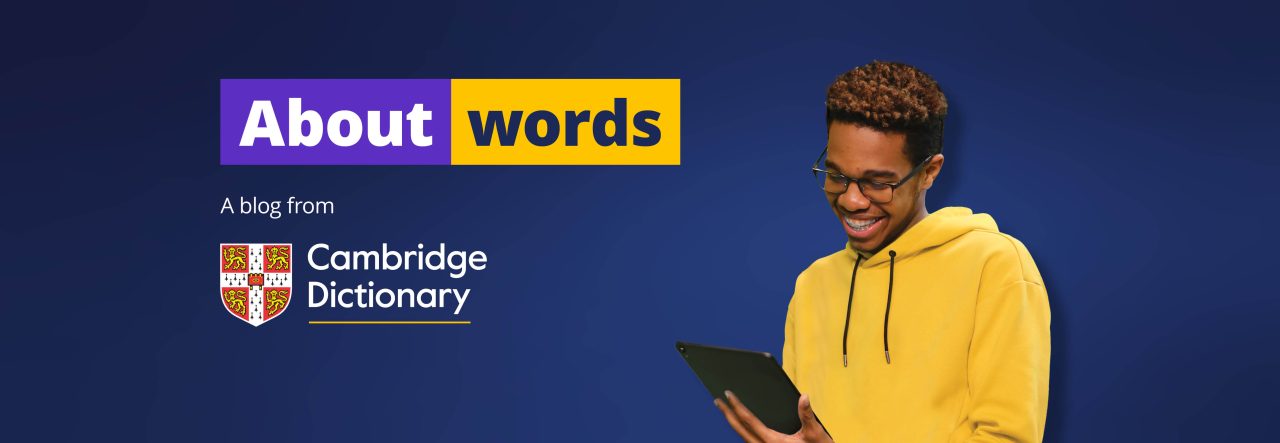
by Liz Walter
March 21st is World Poetry Day and today’s post looks at language we use to talk about this extraordinary form of writing.
The first poems that many of us learn are nursery rhymes, short, traditional poems for children. They usually have a strong rhythm (pattern of sounds), and the ends of the lines usually rhyme (sound the same).
Older schoolchildren often learn to recite poems (say them aloud from memory) – I still remember the words to WH Auden’s poem ‘Night Mail’, learned decades ago! This is an extremely rhythmic poem, made to sound like an old-fashioned steam train. In the first part, where the train is struggling up a big hill, each verse (part of the poem) is just two lines long. Pairs of lines like this are called couplets and when they rhyme, as they do in this poem, they are called rhyming couplets.
The word verse is also used in a more general sense to mean ‘poetry’, especially when we talk about an author writing in verse. A stanza is a group of lines that form a particular rhythm that is repeated in a poem.
Some types of poems have a very strict structure. Sonnets, such as those written by Shakespeare, typically have 14 lines and fixed rhyme schemes. Another type of poem with strict rules is the Japanese haiku, which has three lines, with 5 syllables (sound units) in the first line, 7 in the second and 5 in the third. Limericks are humorous and rhythmic poems with 5 lines, usually about a person, as in this typical example:
There once was a man from Peru
Who dreamt that he swallowed his shoe.
He woke up in fright
In the mid of the night
To learn that his dream had come true!
Of course, not all poems have a strict structure. Free verse is poetry where there is no regular pattern. The lines in this type of poem may not scan (have a regular rhythm). Blank verse has a regular rhythm, but the lines do not rhyme.
When we discuss poems, we often talk about imagery (the way the words make pictures in our minds). Metaphor is when one thing is used as an image for another, for instance in Shakespeare’s line ‘All the world’s a stage’, while similes compare one thing to another, as when Robert Burns says that love is ‘like a red, red rose’.
Many poems use alliteration or assonance. Alliteration is when consonant sounds are repeated, usually at the beginning of words, while assonance is the repetition of vowel sounds, usually within words.
I hope this post has given you a useful selection of words. What are your favourite poems?

You should not say Verse. It can be a sin. The lines in poems are not called verses.
Interesting.
Interesting poetry
Thanks
Just curious~ what is your suggestion; stich, or what?
I would like to write realistic and imaginary poetries with rhyming words,metaphors and similies.My favourite writers are William wordsworth,Ruskin Bond and Rabindranath Tagore.
Hi Sunita:
You have good taste in writers and poets.
So many Indian students have said that the prose and poetry of Bond is an inspiration to them [and I imagine Pakistani and Sri Lankan students too – and indeed over the whole Commonwealth of Nations]
and the same for Tagore – he of course was a Nobel Literature winner.
As for Wordsworth – I came to love him when I was about 13 and I was reading about a poetry course in an American university and then the daffodil poem was introduced.
I wonder if you use nature in your work? What about culture?
Tagore is the poetic star of South Asia, equally a celebrated short story writer!
Thank you Adnan
for reminding us of the power of Tagore’s short stories.
[and that reminds me that people from Bangladesh may enjoy him too – the “South Asia” reference clued me in].
And the idealism – which is how he came to be awarded the Nobel.
Brad Leithauser recently published thru Knopf a book called, Rhyme’s Rooms, The Architecture of Poetry . You’ll find it interesting I think
I particularly like ‘Musée des Beaux Arts” by W.H. Auden, Everything bij Wordsworth too. And ….